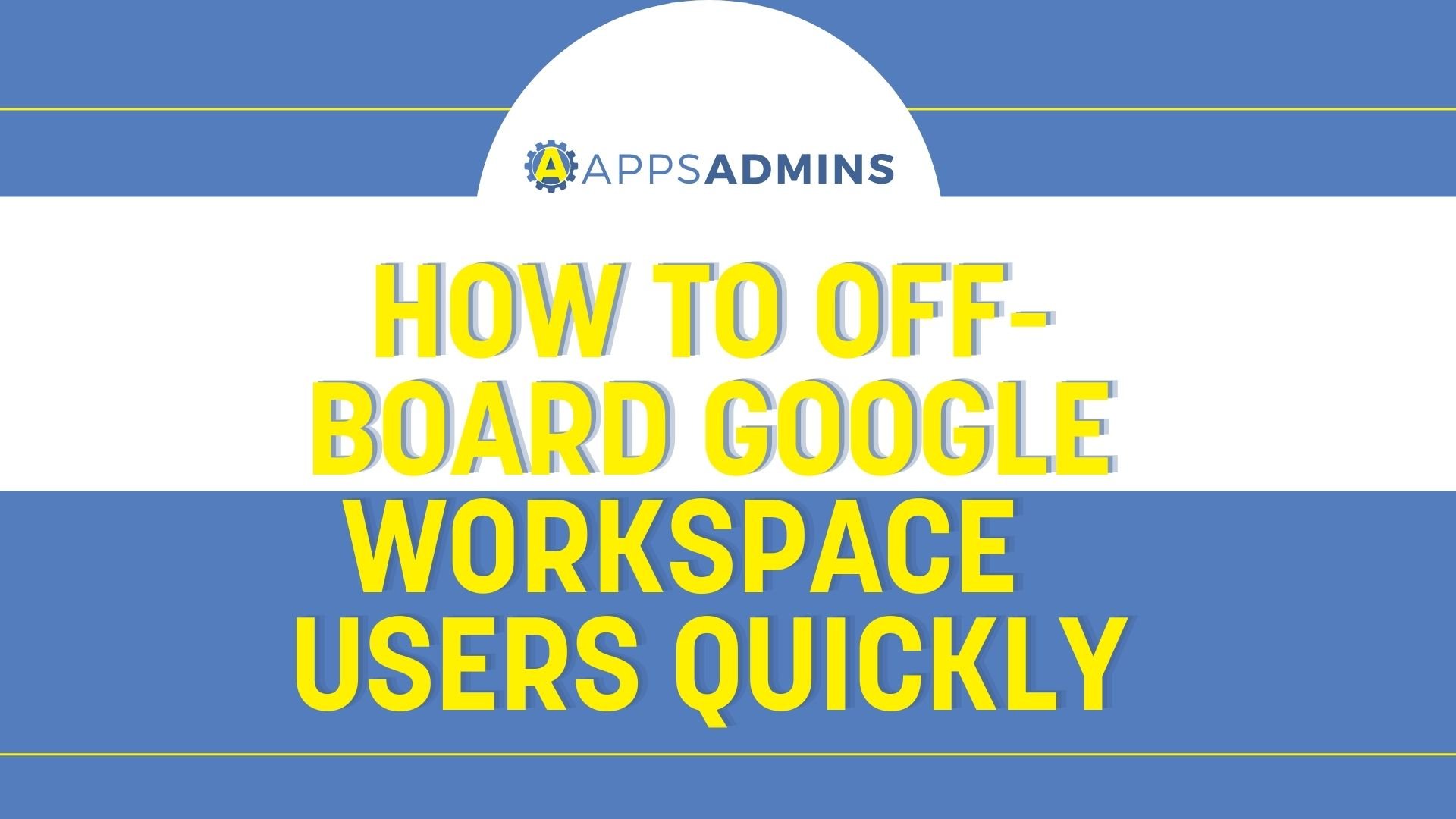G Suite Business Free for 30 Days
Sign up for a Free 30 Day Trial of G Suite Business and get Free Admin support from Google Certified Deployment Specialists.


The age of The Cloud is upon us, whether your business is ready, or not. In recent years, we've seen enterprise Cloud strategies truly begin to evolve. In the early days, businesses simply migrated some of their applications to the Cloud to reduce the IT load. Mainly it's been overloaded email servers. However, today, increasing numbers of organizations are developing individual multi-cloud strategies to optimize their network, and critical-application performance.
As various solutions arise (and dare I say in addition to "situations" as in outages, lag time or issues) to simplify the cloud-computing environment, enterprises are recognizing the value of multi-cloud solutions. So much for cost savings, right? Not so fast, you saved a lot of money by migrating a lot to the Cloud. Think about what's left, all public and private Cloud platforms have matured. Will not having Office 365 preclude you from the rest of the reindeer games? Maybe. A Multi-Cloud strategy is like a backup plan, a decoy, fail-over, redundancy....
Who sees the Value in Multi-Cloud Today?
-
48% of IT decision-makers
-
86% of Enterprises
-
77% of Businesses
Right now, we're seeing a major turning point in the way technology can be used in business. This requires leaders to think more carefully about the solutions they need to connect with critical customers, service providers, and partners as seamlessly as possible. To this end, major providers are beginning to design tools that expand beyond their own platform. Today, if you want to make the most of the cloud world, you may need to look at multi-cloud.
Why the Multi-Cloud Strategies Matter
For customers using AWS, Azure, and Google, multi-cloud is more beneficial today than ever before. As the name suggests, "multi-cloud" is the process of using cloud services accessed from multiple heterogeneous providers, such as AWS, Microsoft Azure, and the Google Cloud Platform, all linked together. In a wider sense, multi-cloud also covers the use of private systems and hybrid deployments that utilize multiple vendors.
As an architectural solution, multi-cloud can be beneficial for various reasons. For instance, it offers a fail safe. While cloud vendors often provide a range of options for redundancy to ensure up time, along with backups to provide data integrity, both rely on the assumption that the vendor's infrastructure doesn't face catastrophic failure.
The right multi-cloud strategy gives business leaders the opportunity to split important workloads, and spread their risk across a range of cloud environments. When planned via the lens of disaster recovery services, this could mean that data is better-protected, and recovery efforts are much less time-consuming. The multi-cloud could even help you to identify the right service architecture to optimize latency, location, and cost between private and public services.
Through enabling remote and local cloud connections, multi-cloud can also allow access to a range of geographical locations, maximizing the global footprint for brands. Where latency might be a concern, proximity can be a real advantage, particularly when connecting to cloud service providers within a data center campus.
The Value Proposition of a Multi-Cloud Approach for Mid-size Businesses.
For all businesses, leaders, and operational innovators, the introduction of a new solution is something that must be driven by user need. In today's industries, the multi-cloud approach has clear benefits, as one department subscribes to AWS services, a sales division deploys Salesforce, and IT developers access VMs through Azure, and so on. Eventually, most enterprises find themselves deploying multi-cloud approaches on an uncontrolled, and unplanned basis.
Before a lack of planning can lead to problems, and less than optimal deployments within a business environment, it's crucial to develop and implement a proactive and coherent strategy for multi-cloud access. The benefits of this planned approach can be seen in a host of value propositions.
Enterprise Customers get Improved Performance, Availability, and Lower Latency With a multi-Cloud Strategy.
With careful management and consideration, multi-cloud architecture and solutions can enable enterprises to distribute their workloads across various CSPs. This helps to improve fault tolerance by accessing redundancy in software and infrastructure, optimizing performance and availability. Latency is typically reduced because the CSP solutions are served from disparate locations, bringing connectivity points closer to more global users. For some cases, latency considerations will need to be a distinct part of any multi-cloud strategy. HybridityA lot of modern cloud service providers develop specialist niches for differentiation, and to capture a niche share of the market.
We're already seeing market leaders in various segments like SaaS, PaaS, and IaaS move beyond basic services. The differentiation trend will only increase further with time, providing more-focused services across specialist niches. The best in the breed will be constantly challenged by market newcomers, making migration and hybridity important.
Manageability of "Second Cloud" Deployments
Multi-cloud can be a cost-effective and simple option on the surface, but it's worth noting that many leaders consider the problem of managing multiple facilities to be time consuming and disruptive. Fortunately, automation can be part of the solution to this, along with a single-pane user management system, or unified solution to integrate private and public clouds. Cost OptimizationBudgeting and cost are frequently at the top of the list when making decisions about the multi-cloud solution. Cost optimization in these circumstances will start with reduced CapEx at the infrastructure level, replaced by a cheaper OpEx solution. Maintenance costs will be reduced, while application support costs less whenever SaaS vendors handle platform maintenance, updates, and licensing.
Market competition can also work in the buyer's favor by minimizing costs, and pushing vendors to continually improve their offerings with new, and attractive features. Scalability is also essential for marketplace agility, both in terms of workload management, and the ability to leverage the most innovative developments.
Security and Risk management in a Multi-Cloud Environment
One of the biggest benefits of multi-cloud is its ability to offer valuable risk mitigation for all AWS, Azure, and Google collaboration customers. From faster and simpler disaster recovery services, to more affordable redundancy solutions and fewer potential points of failure, multi-cloud has a lot to offer. Even the diversification of services across multiple vendors, and the ability to use Google's various features simultaneously is great risk mitigation against downtime. The Mobility of the CloudAnother clear benefit of the multi-cloud for customers who want to make the most of collaboration services, is the every-growing collection of choices being delivered by a range of amazing suppliers. AWS and Azure customers can enjoy all the benefits of Google cloud, and the level of competition in the CSP marketplace has meant that new technology is constantly emerging. Using the Multi-Cloud
For AWS and Azure customers, as well as many others who want to make the most out of Google cloud collaboration services and cloud-based innovations, the multi-cloud is a clear solution for success. Ultimately, the business IT department exists to enable a business, not create obstacles, which is why a multi-cloud solution makes so much sense as performance and network speed become key differentiators for modern companies.
Public Multi-Cloud Interoperability in the Works
As the demand for services and tools to become increasingly compatible and ecosystem-friendly grows, it's only fitting that enterprises would want to find the right solution for their problem - choosing the answer that fits, rather than "making do" with what's available.
Some cloud giants like Google, AWS, and Azure are already working on interoperability between clouds. For instance, where customers can take their pick of infrastructure provider with full multi-cloud support through SAP, Microsoft Azure, AWS, and the Google Cloud platform. More exciting, perhaps, is the ability to use a "cockpit" for cloud management, designed to simplify cloud play.
Multi-cloud delivers a rich mixture of benefits that's sure to drive the trend for adoption into the future. When you consider the mixture of features, cost-reduction solutions, and sheer convenience, it's clear to see why multi-cloud should be a recommendation for any industry.'
Be the Multi-Cloud Hero:
Start with Core Cloud Productivity Apps
Maybe you've already lead your company to Office 365 or AWS and migrated some workloads to Azure. Or you're a G Suite Apps Administrator that's considering Google Cloud Platform's unique features and pricing benefits. Either way, Coolhead Tech has developed some strategies with our Microsoft Apps Admin peers to provide "Multi-Cloud Hero Solutions"
Set Up Recurring Migrations for Key Collaboration Accounts.
Most executives agree "our company lives and dies by email and comms" Whether you run an on-prem Exchange server or are on O365 or whatever the case we can schedule recurring migrations to G Suite Business for your key accounts. We also provide the reciprical service for G Suite business customers wanting the security of true backup accounts, waiting and ready to go.
Here's How Our Multi-Cloud Continuity Hero Solution for O365 Works. It's an Automatic Recurring Migration to G Suite Business.
1. Set up a Free Trial of G Suite Business
2. Provision G Suite user accounts for Migration
3. Purchase Automatic Recurring Migrations (ARM) and Set Schedule
Here's a Multi-Cloud Continuity Scenario that protects 10% of your users on Office 365 with Ready to Go G Suite Business accounts.
| Users: | G Suite | CHT Automatic Recurring Migration | Total | ||
| Office365 | 500 | G Suite | $5 | $3 | $8 |
| Gmail | |||||
| Calendar | Calendar |
50 Users @ $8 = $400/mo Provides: Instant O365/Hosted Exchange Failover to G Suite Business through nightly migrations from Office 365 to G Suite Business. |
|||
| Contacts | Contacts | ||||
| OneDrive | Google Drive | ||||
Comparing Email/Collaboration Continuity to Backup Solutions
Let's face it, O365 still has stability issues. In March, CRN reported on a 17 hour Office 365 disruption and just last month As Microsoft was bragging about Office at Build, Office 365 went down. Decent O365 backup solutions start at about the same price point but do not provide instant continuity in case of an O365 service disruption.
ALT-Cloud to Multi-Cloud Solutions.
 We may be Too cool to be on The 100 Coolest Cloud Computing Vendors Of 2017 but some of our favorite alternatives to the big 3 (AWS, Azure, GCP) are included in CRN's 20 Coolest IaaS (Infrastructure as a Service) including our personal fav, ProfitBricks. Profitbricks is the leading IT channel-focused cloud Infrastructure as a Service (IaaS) provider for good reason. ProfitBricks works directly with local and national Managed Service Providers to bring the Cloud to the ground with solutions based on needs and outcomes.
We may be Too cool to be on The 100 Coolest Cloud Computing Vendors Of 2017 but some of our favorite alternatives to the big 3 (AWS, Azure, GCP) are included in CRN's 20 Coolest IaaS (Infrastructure as a Service) including our personal fav, ProfitBricks. Profitbricks is the leading IT channel-focused cloud Infrastructure as a Service (IaaS) provider for good reason. ProfitBricks works directly with local and national Managed Service Providers to bring the Cloud to the ground with solutions based on needs and outcomes.
Let's take a look at that list again, Long-tail style. It's a TOP 20 IaaS list. There are 3 major Cloud vendors, 4 including IBM. Now, that leaves 16 ALT-Cloud vendors which represent the majority of options for most companies outside of the Silicon Valley bubble. Companies like ProfitBricks may provide better uptime than the major 3 but CIO's can leverage their existing investment in solution focused ALT-Clouds with a "Ready-To-Go" Public Cloud backup plan.
Final Thoughts
Consider the importance of not just your company's email but the entire productivity platform's availability. A Multi-Cloud strategy just makes sense, if you put all your eggs in one Cloud and it goes down, you're to blame, mitigate risk by substituting some Cloud backup with Continuity through a multi-cloud strategy.
.jpg?width=818&name=appsadmins-svg-rules-1%20(2).jpg)







